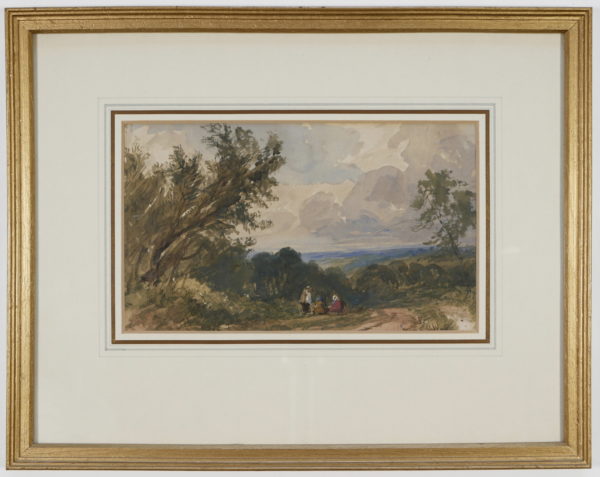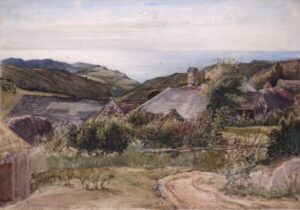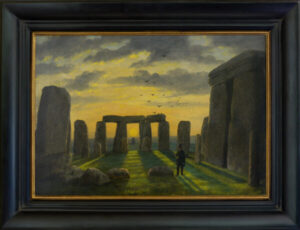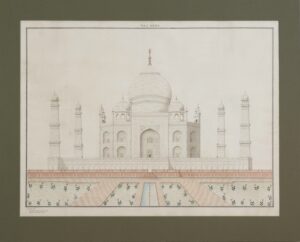Brand
Wimperis, Edmund Morison (1835-1900)
Edmund Morison Wimperis was born at Flocker’s Brook, Chester, on 6 February 1835, the second of eight children of Edmund Richard Wimperis, the cashier of the lead works, Messrs Walker, Parker & Co, and his wife, Mary (née Morison). His father had once been a school drawing teacher, and three of his sisters also became artists.
Wimperis initially worked in a local bank, but in his teens he moved to London to undertake an apprenticeship with the wood engraver, Mason Jackson. As Jackson was art editor of The Illustrated London News from 1860, he was able to offer Wimperis a number of illustrative commissions. He also collaborated with W J Palmer, another of Jackson’s pupils, on illustrations to a large number of publications.
Among other authors, he illustrated novels by Charlotte Brontë, who was a distant relative of his wife, Anne Harry Edmonds, whom he married on 11 April 1863. Settling in Brixton, he and Anne had four children, including the architect and painter, Edmund Walter Wimperis, and the playwright, Arthur Harold Wimperis, who was best known for the musical comedy, The Arcadi-ans (1909), and such screenplays as Mrs Miniver (1942), for which he won an Oscar.
It was possibly through his work for The Illustrated London News that Wimperis met Birket Foster. Foster may have given him further lessons in wood engraving and certainly influenced his general move towards landscape painting, and his particular use of a stipple technique in his early watercolours. He exhibited from 1859, at leading London venues that included the Royal Academy of Arts, the Royal Society of British Artists, the Institute of Painters in Water Colours, the Grosvenor Gallery and the New Gallery.
From about 1870, Wimperis gradually developed a broader approach to painting, and absorbed the influence of David Cox and Peter De Wint in his watercolours and that of John Constable and W J Müller in his oils. His development was helped by frequent painting trips in southern England and Wales, often in the company of Thomas Collier. He was elected an Associate of the Institute of Painters in Water Colours in 1873, and a full member in 1875. In 1885, when he and his family moved to Gower Street, the Institute added ‘Royal’ to its title. A decade later, he began to serve as its Vice President, and played an important role in changes to its organisation.
Though Wimperis only once went abroad – to St Malo – he did take part in the Salon des Artistes Français in Paris as part of the 1889 Exposition Universelle, and won a bronze medal.
Wimperis died at Southcliff Hotel, Southbourne, Hampshire, on 25 December 1900, while visiting his elder son.
His work is represented in numerous public collections, including the V&A; and Blackburn Museum and Art Gallery.



